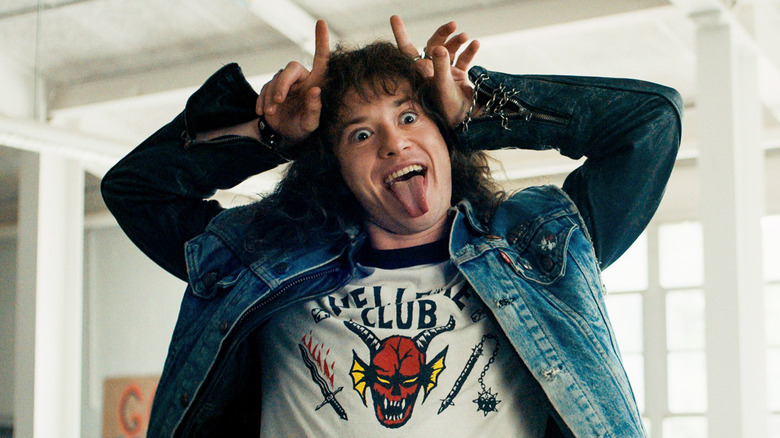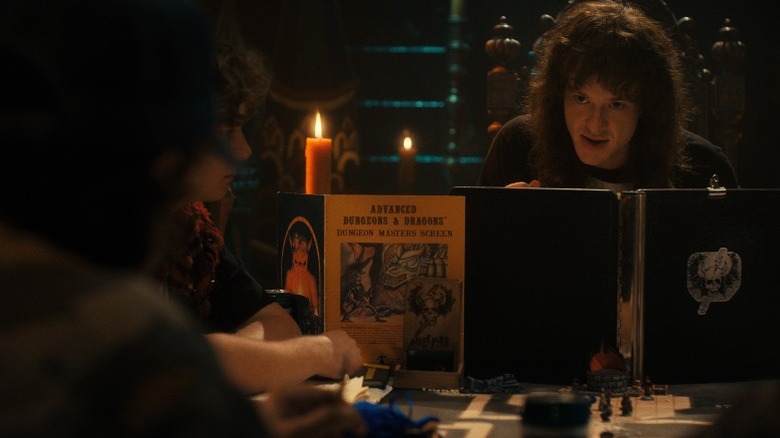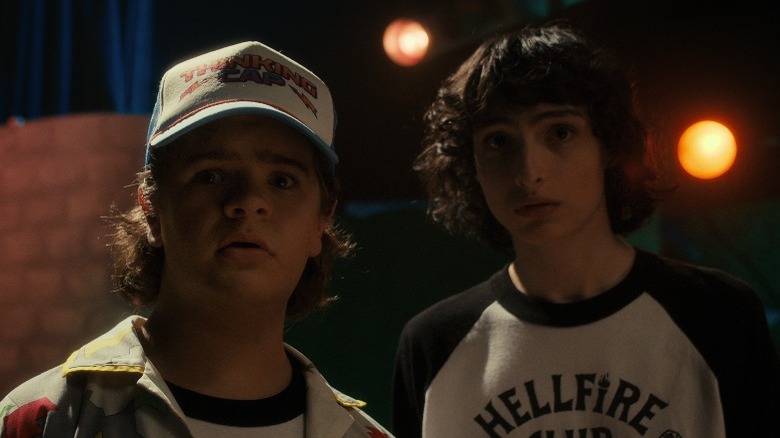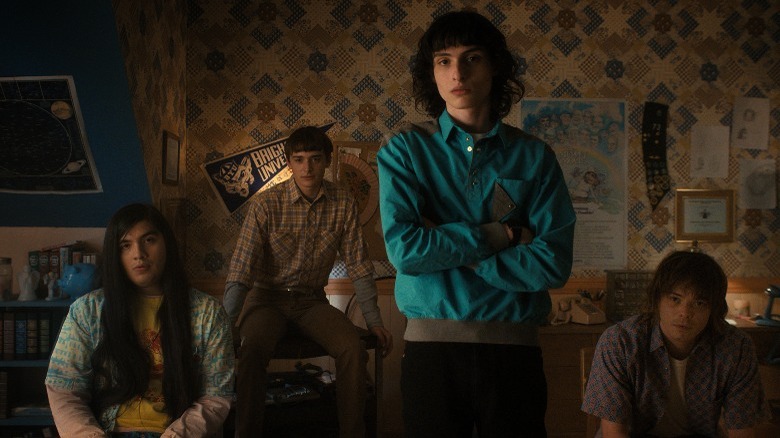
"Stranger Things" is back, and its new season is trading in super-malls and scrunchies for a much darker sign of the times: the Satanic Panic. While the show's fourth season doesn't get into the real-life gory details of the moral panic that swept North America in the 1980s, the specter of Satanic Panic finds its way into the show in a surprising way: through the classic tabletop game Dungeons & Dragons.
The show's fourth season opens with our heroes now in high school. In the wake of part of their world-saving friend group moving away, long-time outcasts Mike (Finn Wolfhard) and Dustin (Gaten Matarazzo) try to find a sense of belonging at Hawkins High School. Instead, they find a Dungeons & Dragons group called The Hellfire Club, led by melodramatic teen punk and possible supersenior Eddie Munson (Joseph Quinn).
Status quo-bucking Eddie thrives on the thrill of scaring normal people and clearly relishes the bad reputation D&D has given his crew. At one point in the show's premiere episode, he reads from a (seemingly fake) Newsweek article about the game, which quotes psychologists saying the game "promotes satanic worship, ritual sacrifice, sodomy, suicide, and murder." But was there really a Satanic Panic about something as innocuous as Dungeons & Dragons?
What Is The Satanic Panic?

In short, yes. The Satanic Panic was a pretty much entirely unfounded moral panic that swept the United States, Canada, and other countries beginning in the 1980s. Though the phenomenon involving unsubstantiated claims of secret satanic rituals and witchy cabals never fully died out, it first gained national attention around 1983, after a preschool in Manhattan Beach, California became a hotbed of accusations about ritualized child abuse. The full story of the McMartin preschool case is complicated, involving false memories and deeply ill-informed police techniques. But as journalist and Satanic Panic researcher Sarah Marshall notes in an interview with Vox, the rise of unsubstantiated moral panics often starts with "a case of a spark falling on a very dry and ready tinder."
In this case, Marshall says, America was just starting to reckon with the idea that childhood sexual abuse existed and was common, and at the same time was becoming vulnerable to the evangelical influence of the Reagan administration. Similarly, around the same time, a collective urge to understand young men's violence and depression would land Dungeons & Dragons in conversation with the Satanic Panic. Before violent video games, this entertaining imagination game was the analog scapegoat for all sorts of bad behavior.
D&D Becomes A Scapegoat

The first case of Dungeon & Dragons-related panic came in 1979, when a gifted teenager and D&D player named James Dallas Egbert III went missing. According to the BBC, Egbert hid out in the utility tunnels under his university during a depressive episode. He was later found but took his own life in 1980. Two years later, a high schooler named Irving Lee Pulling also committed suicide. His mother reportedly tried to sue his school principal and the publishers of Dungeons & Dragons, insisting the gameplay had resulted in a real-life curse being put on her son. She also created an organization called Bothered About Dungeons and Dragons that campaigned against the game.
Some of that organization's language seems to be what inspired Eddie Munson's wonderfully dramatic reading of a tirade against Dungeons & Dragons in the "Stranger Things" premiere. As quoted by the BBC, Pulling accused the game of employing the following:
"Demonology, witchcraft, voodoo, murder, rape, blasphemy, suicide, assassination, insanity, sex perversion, homosexuality, prostitution, satanic type rituals, gambling, barbarism, cannibalism, sadism, desecration, demon summoning, necromantics, divination and other teachings."
Anyone who has come within ten feet of a 20-sided dice set will tell you that this mischaracterization of Dungeons & Dragons is laughable. In fact, pop-cultural perceptions of the game seem to have taken a total heel turn since this era: nowadays, D&D players are more often portrayed as lovable geeks who love stories about dragons and trolls than as a source of any sinister influence.
A Panic Dies Down

Although D&D seems to have regained its cultural credibility after being roped into the Satanic Panic, its role in the cultural hysteria didn't subside particularly quickly. In 1984, Ronald G. Adcox and Darren Lee Molitor, two D&D players, strangled a teenager in Missouri. Though researchers didn't establish any link between the game and a propensity for violence or suicide, D&D ended up whispered about among anxious parents for years as a sort of gateway activity to evil deeds. The New York Times writer Clyde Haberman sums these oversimplified conclusions up well, saying, "Much of the finger-pointing seemed rooted in a classic fallacy in logic: Mr. Adcox and Mr. Molitor played D&D. Mr. Adcox and Mr. Molitor became killers. People who play D&D become killers."
Of course, like all logical fallacies, this simply isn't true. Just as some people who play D&D hurt people, so too do some people who play Monopoly. Though the true stories at the center of this phenomenon are tragic, most don't appear to have a single root cause. If they did, it probably wouldn't be a tabletop role-playing game.
Though the game isn't as controversial as it once was, D&D doesn't appear to be as popular either. But maybe "Stranger Things" will fix that. Netflix's tremendously popular, big-budget series has a long history of making '80s artifacts cool again, from synth-heavy music to blocky-patterned dresses to cassette tapes and walkie-talkies. Maybe, just maybe, the Hellfire Club can bring the fire back to Dungeons & Dragons–this time, without the hell part.
Read this next: Horror Roles That Changed Actors Forever
The post Stranger Things 4 and The Satanic Panic Around D&D Explained appeared first on /Film.

